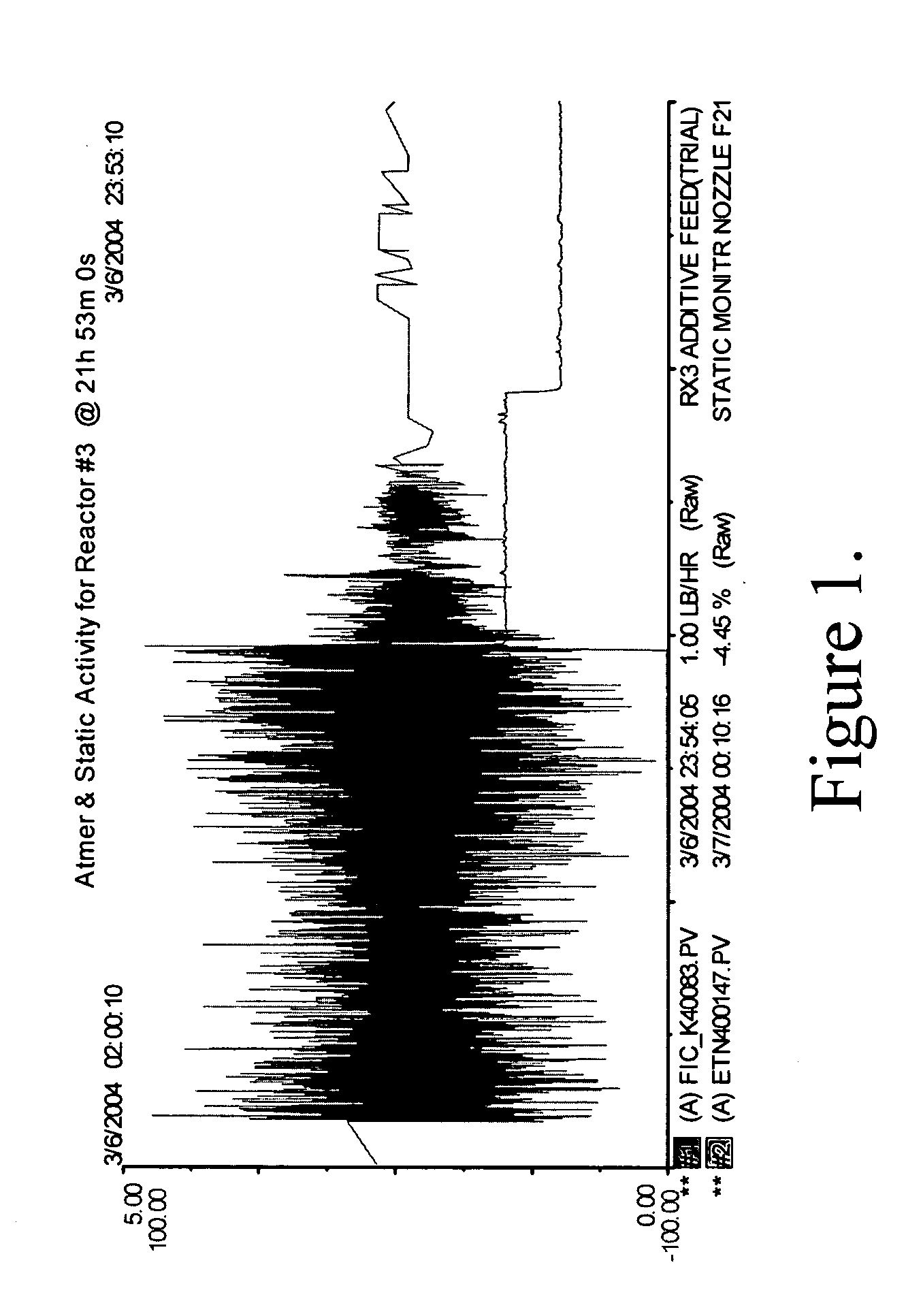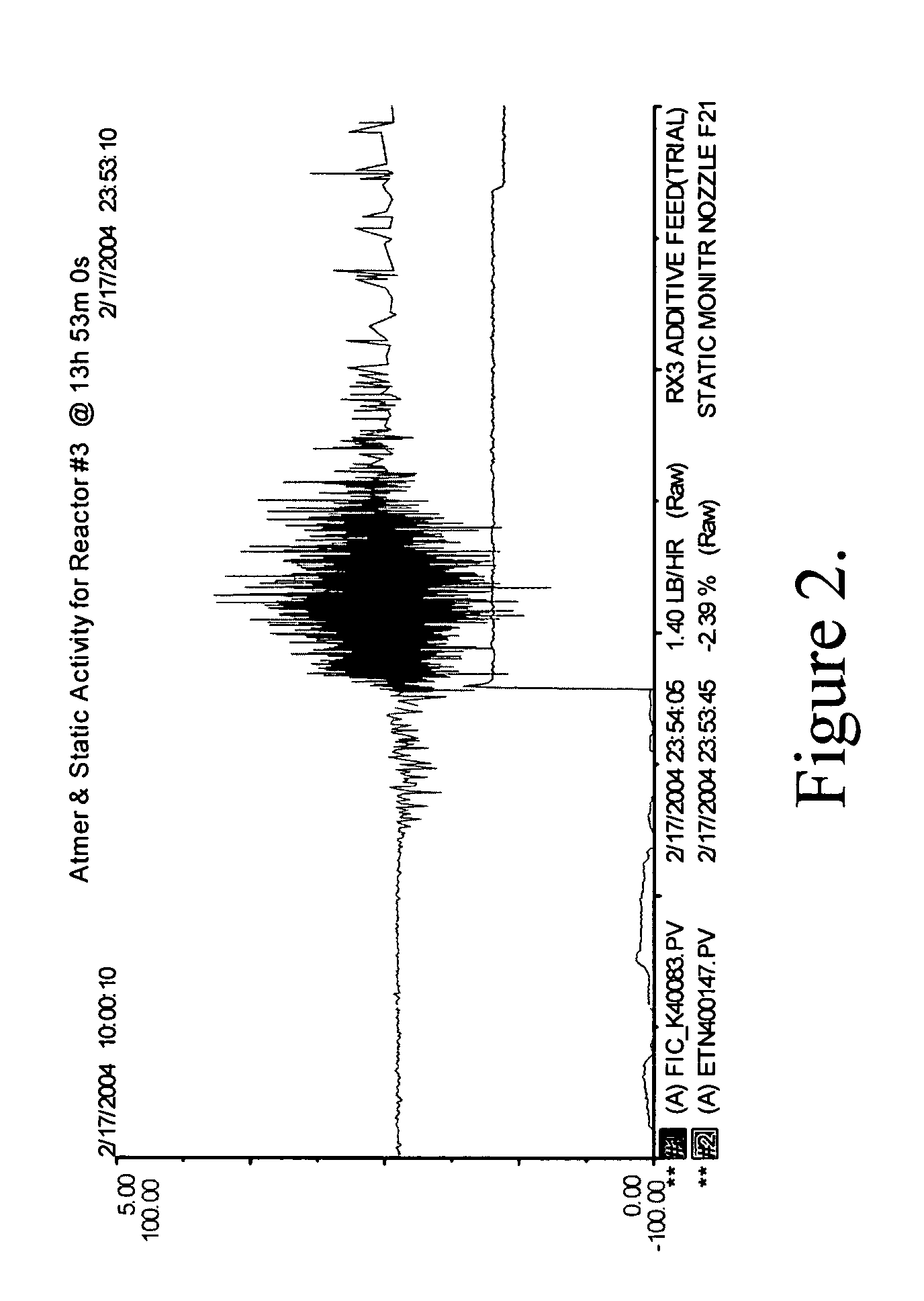Method for reducing static charge and reactor fouling in a polymerization process
a technology of static charge and reactor, which is applied in the field of reducing static charge and reactor fouling in the polymerization process, can solve the problems of large agglomeration or sheets of polymer to fine particles to agglomerate and adhere to the wall of the reactor, and processing problems
- Summary
- Abstract
- Description
- Claims
- Application Information
AI Technical Summary
Problems solved by technology
Method used
Image
Examples
example 1
[0022] During the production of homopolymer polypropylene and following a reactor upset, elevated levels of carbon monoxide were present in the reactor. This resulted in high static levels within the reactor. The static varied from + / −90% of the targeted normal static level. Hydroxylethyl alkylamine was added to the reactor at a concentration of 30 ppm by weight for approximately 3 hours. The reactor was restarted and the static was virtually eliminated. Following start up the hydroxylethyl alkylamine concentration was reduced to 18 ppm. Referring to FIG. 1, the reduction in static in the reactor is illustrated.
example 2
[0023] During the transition from homopolymer to random copolymer production, as ethylene was added into the reactor significant static levels were measured. These levels ranged from + / −50% of the targeted normal static level. It was suspected the cause of these static fluctuations was due to contamination in the ethylene stream. Hydroxylethyl alkylamine was added directly to the cycle gas pipe at a constant concentration of 30 ppm. Within two hours of addition, the static was brought under control. Referring to FIG. 2, the increase in static monitored at the transition from homopolymer to random copolymer and subsequent reduction obtained by practicing the current process are illustrated.
[0024] The antifouling properties of the antistatic agent also prevents non-static related buildup on the reactor interior, cycle gas piping and associated equipment in the cycle gas loop. The hydroxyethyl alkylamine deactivates the surface sites of the catalyst. This prevents entrained fines from...
PUM
| Property | Measurement | Unit |
|---|---|---|
| Length | aaaaa | aaaaa |
| Fraction | aaaaa | aaaaa |
| Fraction | aaaaa | aaaaa |
Abstract
Description
Claims
Application Information
 Login to View More
Login to View More - R&D
- Intellectual Property
- Life Sciences
- Materials
- Tech Scout
- Unparalleled Data Quality
- Higher Quality Content
- 60% Fewer Hallucinations
Browse by: Latest US Patents, China's latest patents, Technical Efficacy Thesaurus, Application Domain, Technology Topic, Popular Technical Reports.
© 2025 PatSnap. All rights reserved.Legal|Privacy policy|Modern Slavery Act Transparency Statement|Sitemap|About US| Contact US: help@patsnap.com


